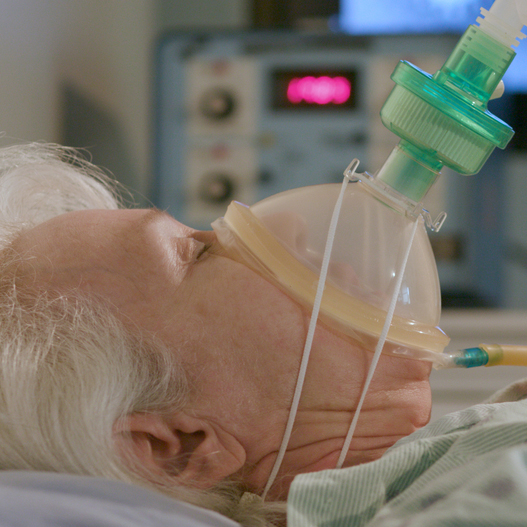NIH study shows higher mortality rates for patients on respiratory support in rural intermediate care units

News Release
Wednesday, January 31, 2024
Findings highlight the importance of providing ICU-level care to rural patients with respiratory failure
A new National Institutes of Health-supported study finds that patients receiving ventilator life support in the intermediate care units – a potentially less costly alternative for people not sick enough for the intensive care units (ICUs) but too ill for the general ward – of rural hospitals had significantly higher death rates than patients in the same type of unit at urban hospitals. The study also found that patients with respiratory failure in the ICUs at rural and urban hospitals fare similarly. Published in the journal Annals of the American Thoracic Society, this study highlights the need for more careful evaluations of patients with breathing problems who are assigned to intermediate care units.
“This study has important implications for rural hospitals when determining how to care for their sickest patients on mechanical ventilation, as rural hospitals tend to be smaller and less resourced,” said Gustavo Matute-Bello, M.D., deputy director for the Division of Lung Diseases at the National Heart, Lung, and Blood Institute (NHLBI), part of NIH. “It emphasizes the need to assess whether rural intermediate care units can meet the complex demands of critically ill patients, and the importance of carefully evaluating the processes designed to care for them.”
The research team, led by Emily Harlan, M.D., a pulmonary and critical care physician at the University of Michigan, Ann Arbor, collected data from 2010 to 2019 on 2.75 million hospitalizations of Medicare patients (65 years or older) who were on respiratory support at rural and urban hospitals across the country. The researchers conducted separate analyses for patients admitted to the general, intermediate, and ICU wards, and another analysis of patients in all the wards combined.
When they compared patients in all the wards, they found that those receiving mechanical ventilation in rural hospitals had significantly higher 30-day death rates than those in urban hospitals. However, when the researchers broke down the data by level of care, patients in the ICUs of rural and urban hospitals had a similar chance of dying. The difference in outcomes, the researchers discovered, was singularly explained by the higher mortality rates for patients in the rural intermediate care units – 37% died within 30 days compared to 31.3% in urban hospitals.
When patients are admitted to a hospital, the least sick are taken to the general ward and the sickest go to the ICU. However, U.S. hospitals are increasingly shifting toward a model that incorporates intermediate care units, which use fewer resources and can be less expensive to operate than ICUs. While these units may help a rural hospital’s financial bottom line how rural patients fared in them compared to their urban counterparts, was largely unknown.
“This study underscores the importance of learning more about how to best use intermediate care units and highlights the need to continue investing in rural hospitals to make sure all who need it have access to life-saving care,” said Harlan. “There is a common belief that rural hospitals may have a lower quality of care, but that’s not what we saw for the ICU patients in our study.”
Funding: This study is supported by NHLBI grants K23HL140165 and T32HL007749.
About the National Heart, Lung, and Blood Institute (NHLBI): NHLBI is the global leader in conducting and supporting research in heart, lung, and blood diseases and sleep disorders that advances scientific knowledge, improves public health, and saves lives. For more information, visit www.nhlbi.nih.gov.
About the National Institutes of Health (NIH):
NIH, the nation’s medical research agency, includes 27 Institutes and Centers and is a component of the U.S. Department of Health and Human Services. NIH is the primary federal agency conducting and supporting basic, clinical, and translational medical research, and is investigating the causes, treatments, and cures for both common and rare diseases. For more information about NIH and its programs, visit www.nih.gov.
NIH…Turning Discovery Into Health®
link





